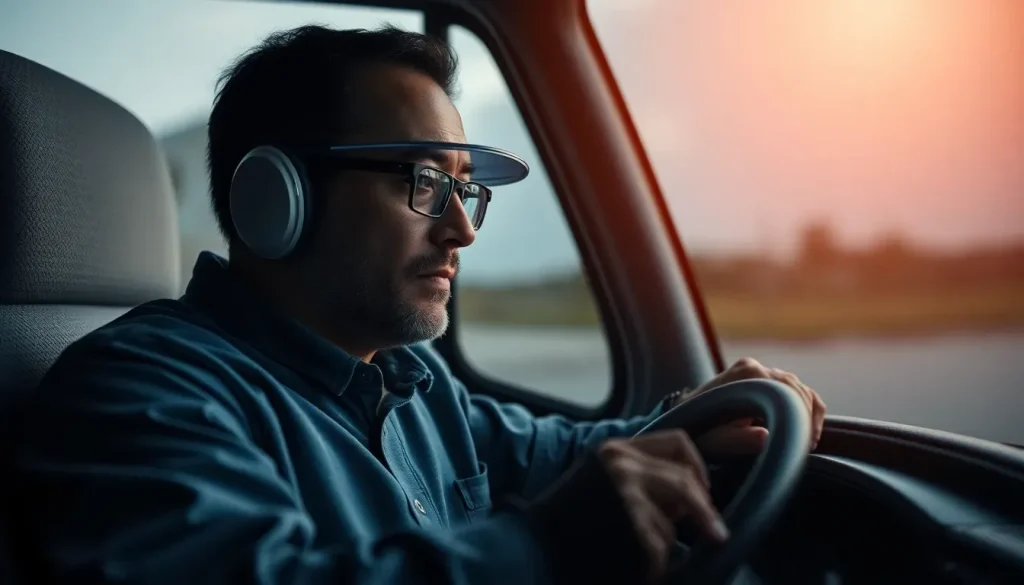Lytx fatigue detection technology gets early feedback from fleets

As the transportation industry continues to evolve, the integration of advanced technologies becomes crucial for enhancing safety and efficiency. One innovative solution that has garnered attention is Lytx's Fatigue Detection Technology, which aims to address a significant concern in fleet management: driver fatigue. This technology not only promises to improve safety standards but also offers actionable insights to fleet operators. Let's explore how this system works, its initial reception, and what the future holds for this groundbreaking technology.
Understanding the Fatigue Detection Technology
Lytx’s Fatigue Detection Technology employs a combination of machine vision, artificial intelligence, and expert review to monitor key indicators of driver fatigue. This system was developed with the understanding that fatigue is a major factor in road incidents. By analyzing signs such as:
- Prolonged eyelid closures
- Micro-nodding
- Drifting from lanes
- Changes in head position
- Body posture shifts
the system can alert fleet managers and operators in real time. According to Brendon Hill, Senior Vice President of Product at Lytx, the system boasts an impressive 90% accuracy rate. This precision is vital for ensuring that interventions are timely and effective.
Initial Adoption and User Feedback
Since its launch in July 2025, over 23,000 vehicles across the nation have adopted Lytx's Fatigue Detection Technology. Early reports from fleet operators and safety directors indicate a noticeable decrease in fatigue-related incidents. One operator expressed gratitude, stating, “I cannot show enough gratitude for Lytx hearing our concerns and coming up with a fatigue driver alert.” Another user summarized their experience simply: “The system works!”
This positive feedback underscores the importance of real-world testing, as fleets assess the system’s effectiveness beyond mere marketing claims. The ability to receive immediate alerts enables fleet managers to take proactive measures, thus enhancing driver safety and overall operational efficiency.
Insights from Early Data Usage
Initial data collected from early adopters reveals critical patterns regarding driver fatigue. For instance, fatigue-related incidents tend to peak during specific times of the week and day:
- Commonly observed between Tuesday and Friday
- Most frequent during early morning hours, particularly between 5 a.m. and 6 a.m.
- Lower risk during daytime driving
- Weekends typically show fewer fatigue incidents
These insights can help fleet operators schedule their drivers more effectively, ensuring that those who are more prone to fatigue are monitored and supported appropriately, which can ultimately lead to fewer accidents and injuries on the road.
Future Directions for Fatigue Detection Technology
Looking ahead, Lytx plans to make its Fatigue Detection system even more accessible by integrating it with its Surfsight AI-14 dash cams, set to roll out in early 2026. The company emphasizes that the effectiveness of the system is contingent on stable cellular network connectivity, meaning that performance may vary depending on the fleet's operational environment.
As Lytx expands its technology, fleet operators can expect ongoing improvements in the accuracy and responsiveness of fatigue detection, further bolstering road safety measures. The integration of such systems signifies a pivotal step in leveraging technology to combat one of the trucking industry's most pressing challenges – driver fatigue.
The Role of Technology in Fleet Safety
Technology plays a crucial role in enhancing safety protocols within the fleet management sector. With solutions like Lytx’s Fatigue Detection Technology, companies are not only able to track driver behavior but also to implement corrective measures effectively. Other technological advancements complement these efforts, including:
- Telematics systems for real-time vehicle monitoring
- Driver training programs enhanced by AI analytics
- Dash cams that record incidents and provide insights for training
- Predictive analytics to foresee potential safety issues
By investing in such technologies, fleets can create a safer working environment for drivers and reduce liability risks associated with accidents.
Conclusion: A New Era of Fleet Management
The integration of advanced technologies like Lytx's Fatigue Detection system marks a significant shift in how fleets approach safety and efficiency. With the ability to detect and respond to driver fatigue in real-time, fleet operators can enhance their safety measures and promote a culture of well-being among drivers. As the technology continues to evolve, it is clear that the future of fleet management lies in leveraging innovation to address persistent challenges in the industry.




Leave a Reply